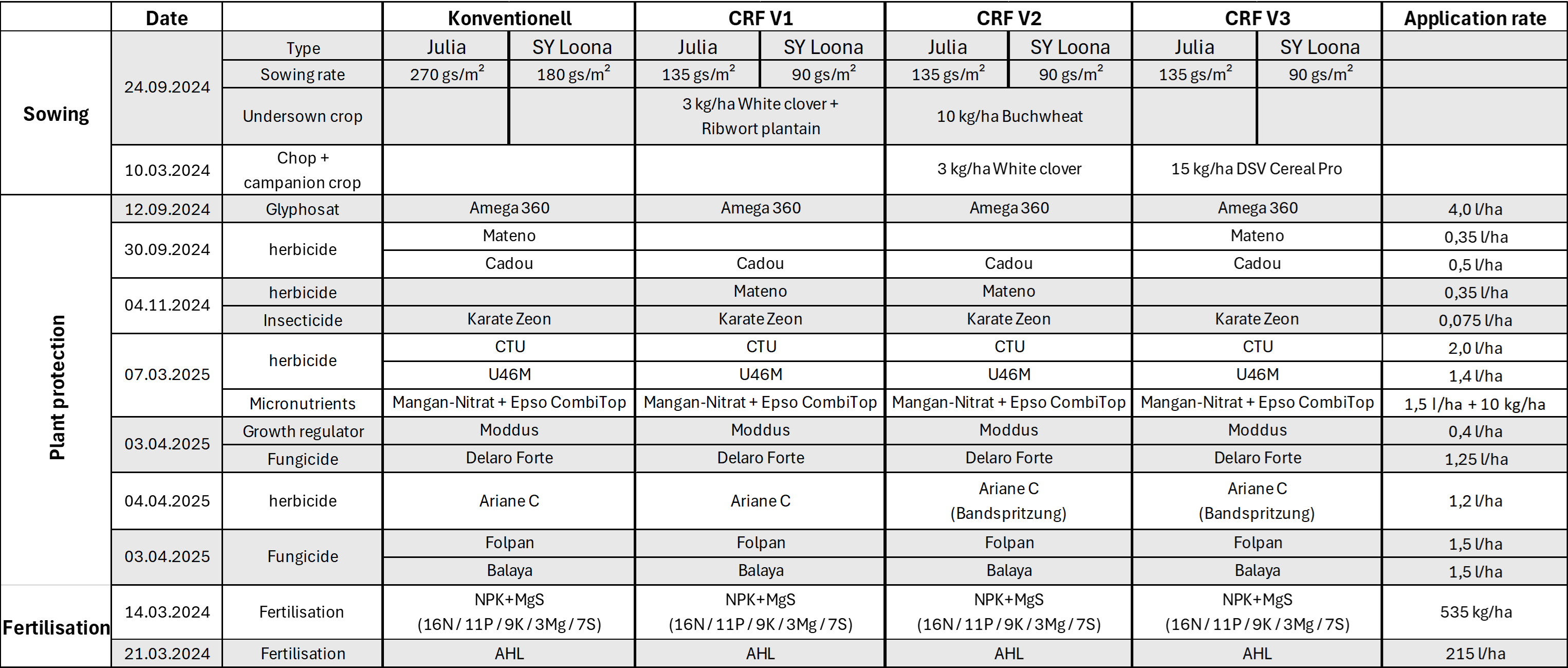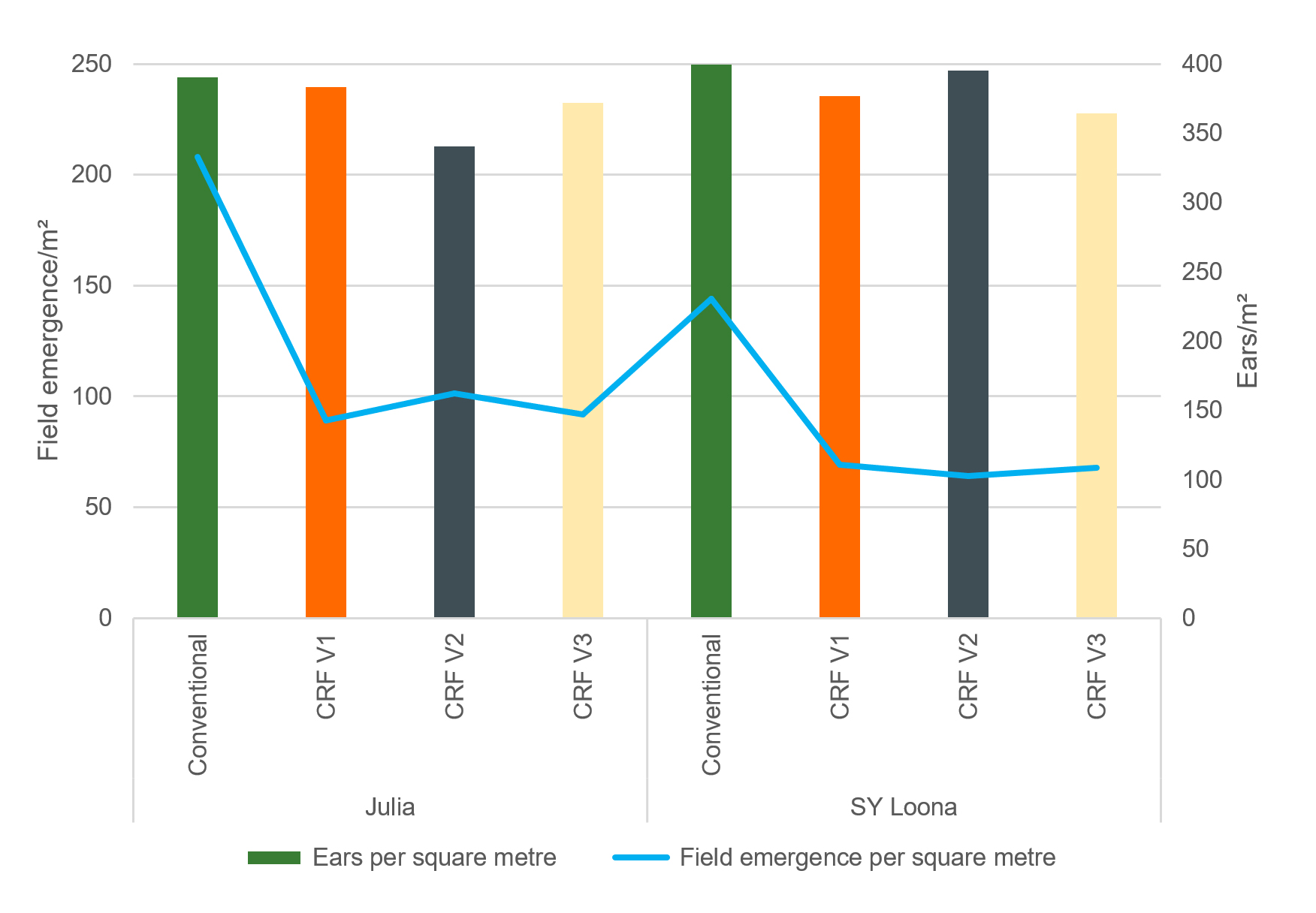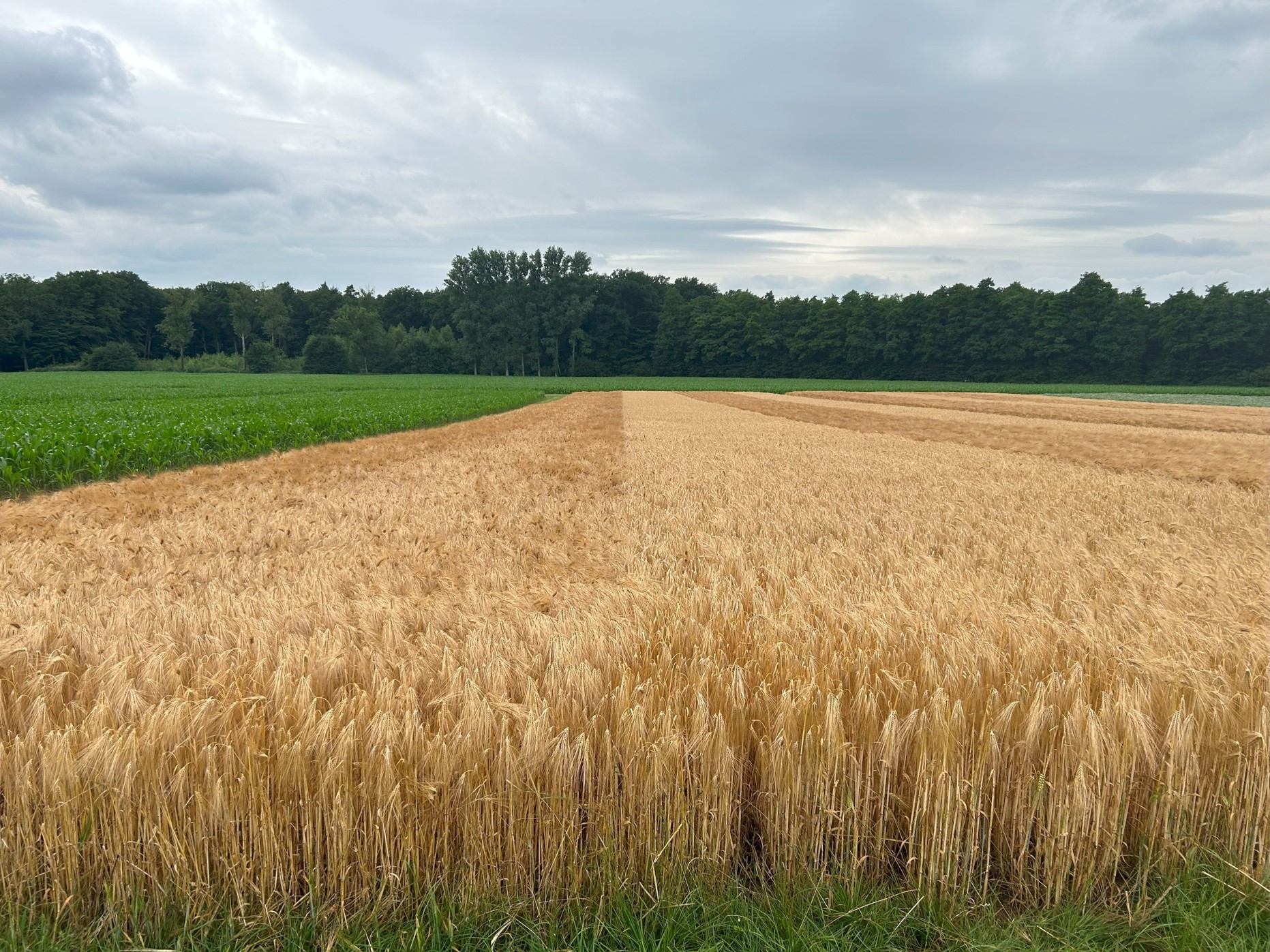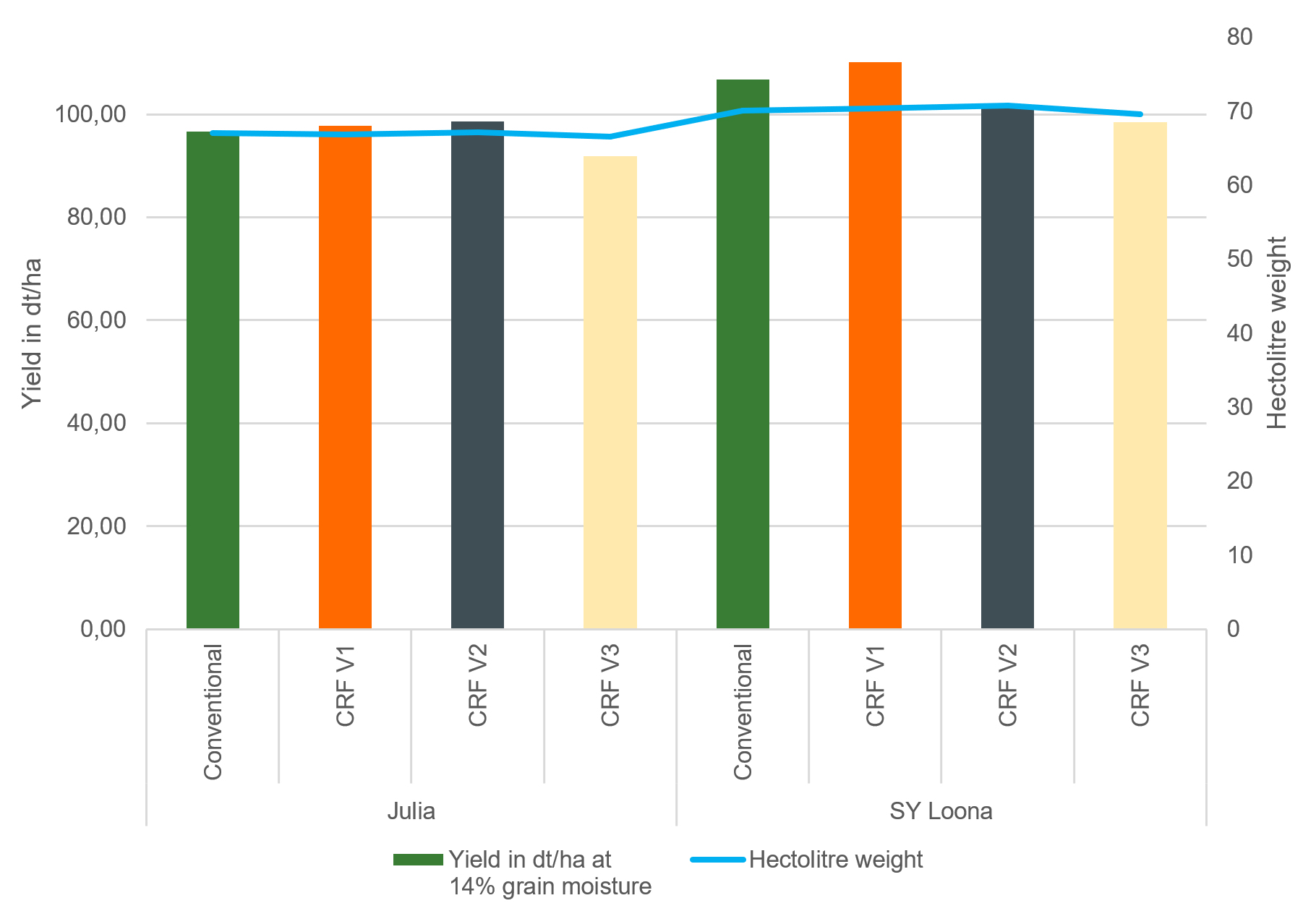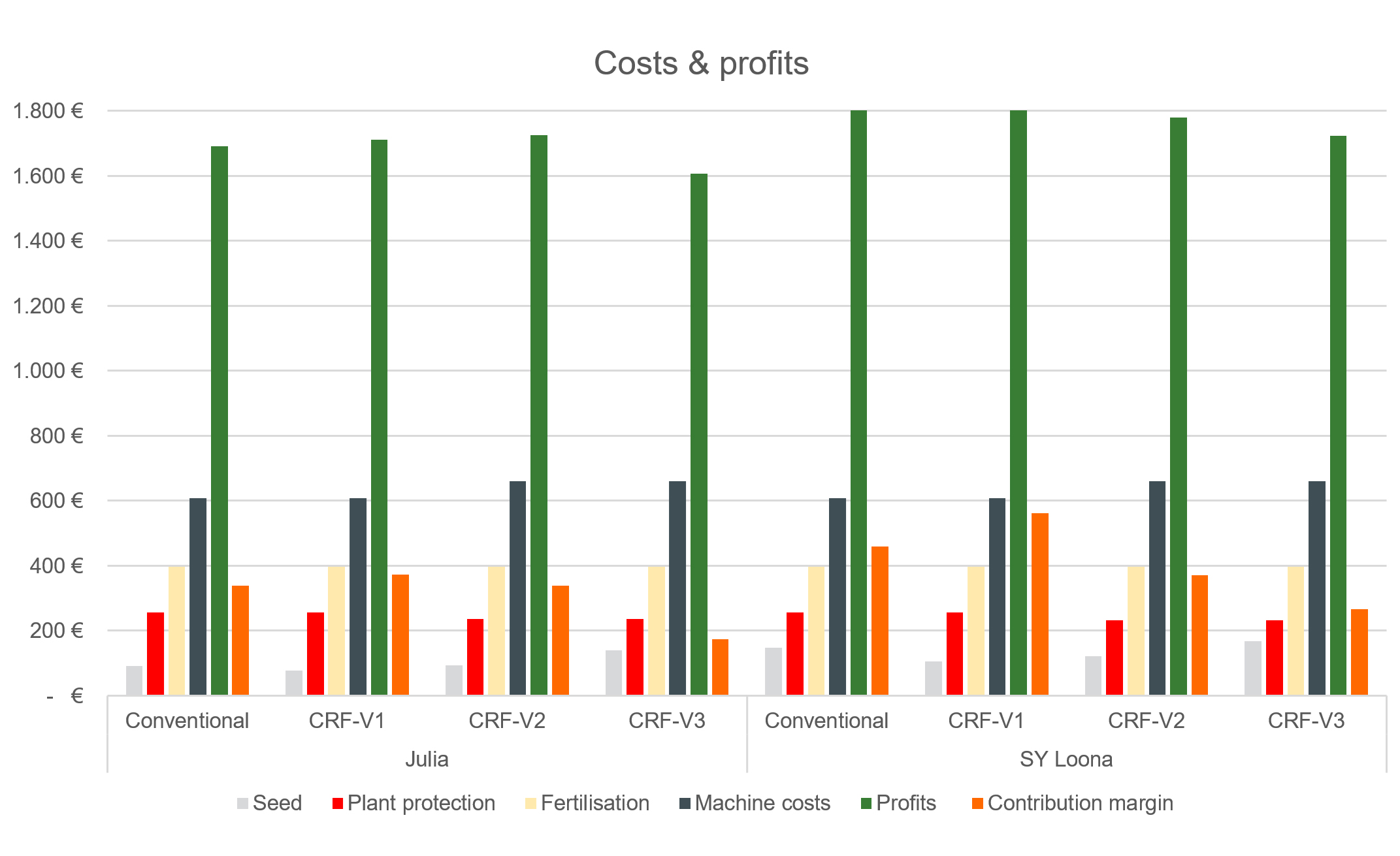CRF trial 2024/2025: Winter barley
As part of our CRF trial in 2024/25, we compared two different variety types of winter barley: the pure line variety DSV Julia and the hybrid variety SY Loona. In addition, we tested different dates for sowing companion crops. The previous crop was winter rape.
Trial design
The barley was planted at the end of September using the mulch sowing method. A 6 m Avant with FTender 2200 was used for sowing. In the conventional variant, normal seed rates were selected (270 gs/m² for the Julia variety and 180 germinable seeds/m² for the Loona variety), while seed rates were reduced by 50% in the CRF variants. The sowing depth was three centimetres.
In the CRF V1 and CRF V2 variants, we sowed companion crops in parallel with the barley. We sowed 3 kg/ha of ribwort plantain and white clover in the CRF V1 variant. 10 kg/ha of buckwheat was sown in the CRF V2 variant. In the CRF V3 variant, DSV TerraLife CerealPro was sown with a hoe in spring 2025. Due to heavy weed pressure in autumn caused by chickweed, a herbicide against dicotyledonous weeds was applied, meaning that the companion crop was also controlled. Therefore, we also sowed 3 kg/ha in the CRF V2 variant with a hoe in the spring.
For plant protection (UF1302), the variants sown without a companion crop were treated with Mateno + Cadou in early post-emergence. The variants with the companion crops were initially only treated against grasses. Due to heavy weed pressure, measures had to be taken at the beginning of November. Follow-up treatment was necessary in the spring. This was carried out with full area coverage. Further treatment was necessary as the common ragwort had not been sufficiently controlled. This was carried out as a band application in the CRF V2 and CRF V3 variants.
The fungicides and growth regulators were applied using the same strategy across all variants and were applied with full area coverage.
The trial was fertilised with mineral fertilisers in liquid and granular form. Fertilisation was carried out with full area coverage. In addition, micro-nutrients such as manganese, zinc and magnesium were added as fertilisers.
Observations in the field
Field emergence was at a similar – expected – level for both varieties. Despite relatively early sowing of the cereals, the companion crops were unable to develop sufficiently to suppress weeds. Therefore, there was extremely strong pressure from chickweed in these variants. Sowing the companion crop in spring was also a major challenge. The very dry conditions from the beginning of March to the end of May provided ideal conditions for using the hoe. However, these conditions also pose a challenge for the emergence of companion crops. Due to the dry conditions, plants emerged only sporadically and in insufficient numbers.
Ripening and yield
The ripening of both varieties was fairly identical, so that the crop could be harvested with moisture levels of 12.6% and 12.7% respectively.
In terms of grain yield (14% grain moisture), Loona achieved the best result in CRF V1 with 110.1 dt/ha – just ahead of the conventional variant of the same variety. Julia's yield was broadly similar across all variants, with CRF V2 leading the way at 98.6 dt/ha.
All varieties were close together in terms of hectolitre weight. Loona showed slight advantages in the CRF-2 variant. This confirms the assessment result that the hybrid barley was well able to compensate for the lower sowing rate through stronger tillering. In addition, it can be seen that the hybrid barley achieved a slightly higher yield due to its slightly higher hectolitre weight.
Cost-effective:
To calculate profitability, we have assumed a barley price of € 17.50/dt. The costs for the implements are taken from the data records of the machinery ring, and the costs for the inputs are the prices actually paid.
The highest total costs were recorded in the CRF V3 variant, as the seed costs for the diverse companion crops were highest here. The slightly higher costs for hybrid seeds are also reflected in the total costs, but the slightly higher seed costs are clearly offset by the higher yield. The CRF V1 variant of the SY Loona variety was the most economically viable option, with a contribution margin of € 561/ha. Similarly, the CRF V1 variant was the most economical option for the Julia variety, at € 374/ha.
Conclusion:
The trial year 2024/2025 showed that the choice of variety had an impact on crop development and that low sowing rates could be compensated for with strong compensation types. This is also reflected in the yield, with the hybrid barley producing an average yield that is approximately 8 dt/ha higher. In addition, the trial year showed that research is needed into the establishment and care of companion crops.
